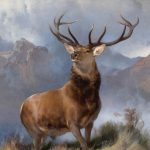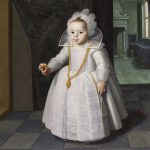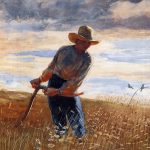Francis Bacon, born on October 28, 1909, in Dublin, Ireland, is celebrated as one of the most profound and influential painters of the 20th century. His work, known for its bold, grotesque, emotionally charged, and raw imagery, delves into the human condition, exploring themes of isolation, torment, and the existential dread lurking beneath the surface of modern life. Bacon’s paintings are characterized by their dramatic use of color, distorted figures, and unsettling subjects, creating a hauntingly visceral experience that challenges and captivates viewers.
Bacon’s early life was marked by a tumultuous relationship with his parents, particularly his father, a former British Army officer who struggled to accept his son’s asthma and homosexuality. Bacon left home in his late teens and lived a nomadic lifestyle, spending time in Berlin and Paris before settling in London. His initial foray into the art world was as a designer of furniture and rugs, but by the mid-1930s, he had turned his focus to painting, drawing inspiration from Surrealism, Picasso, and the biomorphic forms of Jean Arp.
The breakthrough moment in Bacon’s career came in 1944 with the creation of “Three Studies for Figures at the Base of a Crucifixion,” a triptych that introduced his signature style of distorted bodies and anguished emotion. This work marked Bacon’s departure from his earlier, more explicit engagement with religious themes and propelled him into the forefront of the contemporary art scene in Britain. His work from this period onwards would continue to explore the darker aspects of human existence, often through the lens of his own turbulent life experiences.
Bacon’s art is notable for its exploration of the human figure, particularly the face and the body in motion, often captured in a state of transformation or disintegration. His portraits, often of friends and lovers, are rendered with a raw intensity that seeks to expose the inner turmoil and psychological depth of his subjects. Bacon’s fascination with the movement and tension of the body was further influenced by his interest in photography, particularly the sequential photographs of movement by Eadweard Muybridge, which he often referenced in his paintings.
Throughout his career, Bacon maintained a fascination with the existentialist themes of alienation and despair, influenced by his readings of Nietzsche, T.S. Eliot, and Aeschylus. His work frequently addresses the fragility of the human condition, juxtaposed against the arbitrary cruelty of the universe. Bacon’s paintings, such as his later triptychs and his series inspired by the portraits of popes by Velázquez, are imbued with a sense of confrontation, inviting the viewer to confront the complexities and contradictions of human nature.
Despite his focus on the macabre and the grotesque, Bacon’s work is also celebrated for its technical brilliance, particularly his innovative use of color and his ability to manipulate form to convey emotion and intensity. His methodology, often involving the use of chance through the application of paint with rags, his hands, or even dust, added to the spontaneity and rawness of his work.
Francis Bacon’s contribution to the art world extends beyond his distinctive stylistic innovations; he challenged the conventions of portraiture and figure painting, pushing the boundaries of what could be expressed through art. His relentless exploration of the complexities of human emotion and existence has left a lasting impact on contemporary art, inspiring generations of artists to explore the depths of human psyche and condition.
Bacon’s legacy is that of a painter who could articulate the anxieties and existential dread of the 20th century with profound intensity and raw beauty. His work, though often unsettling, speaks to the universal experience of being human in a world fraught with uncertainty and suffering. Francis Bacon passed away on April 28, 1992, in Madrid, Spain, but his work continues to engage, challenge, and move audiences, securing his place as a pivotal figure in the history of modern art.





